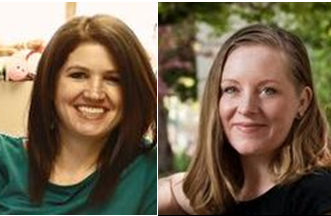 Congratulations to everyone starting college this semester! College can be a bewildering new challenge, but a bit of advice can go a long way. Below are some of the secrets of college success from us: two sociologists — one from an open-access four-year school and one at a private liberal arts school — with over 15 years of college teaching combined.
Congratulations to everyone starting college this semester! College can be a bewildering new challenge, but a bit of advice can go a long way. Below are some of the secrets of college success from us: two sociologists — one from an open-access four-year school and one at a private liberal arts school — with over 15 years of college teaching combined.
Don’t put pressure on yourself to get straight As from the get-go.
College is a unique institution with its own rules and skills. You will not simply get an A because you are “smart.” Getting an A is a combination of effort, prior knowledge, and experience, so being smart at college means learning a specific skill set. If you are in your first year, you may find that you must work harder to get the same grade as a senior who has much more experience at excelling in college classrooms and, thus, knows better how to do it. Be patient with yourself. Acknowledge that there will be a learning curve and give yourself some time to climb it. In the meantime, look forward to when you will be the one who knows exactly what to do.
Sometimes studying hurts and that’s a good thing.
The mind is like a muscle: if you use it, it becomes stronger. You can improve your emotional intelligence, your reasoning skills, your mathematical ability, how quickly and effectively you absorb new information, and more. But it isn’t necessarily fun. Like working out your body, working out your mind can be uncomfortable, even painful. You’re not really challenging and improving your mind unless it hurts a little. So you may find that learning can sometimes feel kind of like suffering. This is normal. It doesn’t mean that you’re not smart, it means that you’re getting even smarter.
Memorize the phrase “pluralistic ignorance.”
Research shows that most college students misperceive their peers’ behaviors and attitudes. They think drug and alcohol use is higher than it is and that their peers are less concerned about it than they are. They also tend to think that everyone else might be having more fun and more sex. We suspect this is even worse now that everyone stalks each other on social networks. Keep in mind the possibility that studying a lot, having other responsibilities, and not partying all the time is normal. Because it is.
Collect as many mentors as you can.
Often new students will be assigned an advisor when they arrive on campus. That’s great. Definitely go talk to them. But don’t think that you only get to have one. Collect lots. Turn to older students, professors you like, counselors and coaches, and members of the staff or administration. Build a range of relationships with people who understand this college thing pretty well and lean on them all. You will be glad to have their advice and, later, they’ll all be lining up to write you letters of recommendation for jobs and graduate programs.
On tests, change your answers if you second-guess yourself.
Somewhere along the line, you’ve probably heard the standard advice for taking multiple-choice or true/false tests: stick with your first answer. Instructors often reinforce this adage before each exam, and students encounter it everywhere from SAT prep books to the study skills lecture in their Intro to College course. Just one problem: decades of research show it isn’t true. There’s overwhelming evidence that when students change their answers, they do better on the test. In one study of 1,561 students, 51% of the changes were from wrong answers to right ones; only 25% were from right to wrong ones (the others were from one wrong answer to another wrong one).
So why are we still so convinced we should stick with our first answer? Because we feel more regret when a bad outcome is due to an action we took than when it’s due to our inaction, and that regret makes us more likely to remember it. You shouldn’t change answers just for the sake of it, of course, but if you’re taking an exam and begin to doubt an answer, don’t be afraid to change it. You’ll be wrong sometimes, but mounds of data strongly suggest you’ll be right quite a bit more often—even though it might not feel that way.
Think hard about whether online classes are the best choice for you.
Online classes — and even entirely online degrees — are increasingly common at most campuses. They offer flexibility that can help you fit classes in around work, family life, or conflicting class schedules. But before you sign up, think honestly about your strengths and weaknesses. Ask yourself:
- Can you keep yourself on schedule without in-person classes where instructors or other students might remind you of upcoming due dates?
- Do you learn well independently?
- Do you have reliable access to a decent computer and fast internet connection?
- Do you struggle with the topic, making it likely that you might need at least some one-on-one help?
It’s not that face-to-face classes are always or inherently better than online courses. But the flexibility that online courses offer may make them particularly tempting, even when they’re unlikely to be your best choice for success. Online classes aren’t always the smartest way to go, even if they’re convenient.
When picking a major, get the facts.
Research shows that many students choose a major somewhat randomly. In the process of fulfilling their required range of classes, they encounter a particularly inspiring or effective instructor in an intro-level course and the rest is history.
Inspiration can help narrow down your choices, but most students have to be at least a little bit practical, too. Here are some questions to ask:
- Does the major have a rigid set of pre-reqs you have to take in order, and if so, when do you need to start taking them? Are you “on track?” If not, can you afford to stay in school longer to pursue a major you’re really passionate about?
- Are lengthy unpaid internships usually required after graduation? If they are, can you or your parents afford to support you while you work for free to build up a resume?
- Will you need to go to grad school to have many job options in the field and, if you will, are there good graduate programs in your area or will you need to move? Can you do so if needed?
- What’s your starting salary likely to be, and if you’re taking out student loans, how much of your likely income would go to paying them each month?
Don’t get us wrong — being passionate about a topic or discovering you have a particular knack for a field should be important factors as you pick a major! But it’s a good idea to turn to older students, professors, and advisers with these questions so that you know what you’re getting into. Whatever you decide, you’ll likely be more satisfied long-term if you go into it with a clear understanding of the implications of your decision.
Finally, take the time to make true friends.
Not Facebook friends, but real, solid, good, we-can-count-on-each-other besties. We know, we know. College is supposedly about freedom and parties and drinking and hooking up! There’s plenty of time for that. Also make friends a big priority. There’s a very strong correlation between happiness and being surrounded by friends you can really talk to. In fact, both psychological and physical well-being are more strongly related to friendship than they are to romance. So, hook up and form relationships if you want, but don’t prioritize sex and romance over friendship. The latter is equally important to a happy, fulfilling life.
Cross-posted at Pacific Standard.
Lisa Wade is a professor of sociology at Occidental College and the author of American Hookup: The New Culture of Sex on Campus. You can follow her on Twitter and Facebook. Gwen Sharp is the Associate Dean of LAS at Nevada State College. You can follow her on Twitter.










